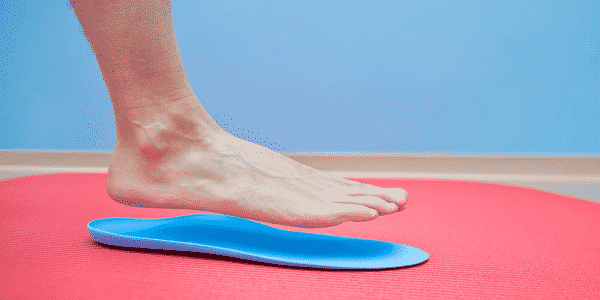How to Prevent and Treat Foot Ulcers for Diabetics
The healing capacity of the body slows down if you have diabetes, that’s a fact. According to doctors, Diabetes (mellitus) is the fastest silently growing disease all across the globe. The unregulated blood sugar causes more harm than what we might be aware of. Unfortunately, foot ulcers are connected to diabetes. Diabetic foot ulcers are a common complication related to prolonged or severe cases of diabetes. In this article, we’ll go over how to prevent and treat foot ulcers caused by diabetes.
Diabetes and Foot Ulcers – What is the relationship?
Foot ulcers form gradually as a result of uncontrolled diabetes where required curative measures are not taken. In fact, according to statistics, approximately 15 percent of diabetes patients face the problem of foot ulcers. Out of these, 6 percent people face severe complications of diabetic foot ulcers and need to get hospitalized for the same.
The two major side effects of diabetes that contribute to the development of diabetic foot ulcers are peripheral neuropathy and peripheral artery disease. High blood sugar levels can damage the sensory nerves in the extremities of the body and this is known as peripheral neuropathy.
Peripheral artery disease, on the other hand, is the narrowing of the arteries due to plaque build up inside them. As a result, the supply of blood, oxygen and nutrients to the legs and extremities is severely affected. Due to these problematic conditions, even a minor cut or wound to the foot can turn ulcerated. This ulcer can become an easy target for microbial attack and the foot ulcer can get infected. If not tended to even at this stage, the infection can spread to the bones and tendons and even cause death of tissues in the foot.
But you need not to fret over this too much, it is very much possible to avoid such a condition of emergency.
How to Prevent and Treat Foot Ulcers Caused by Diabetes?
Although there are no sure short tips to prevent diabetic foot ulcers, taking the following precautions can go a long way in reducing the risk of developing foot ulcers.
- Keep an eye on your blood sugar levels and don’t let them go too high. Maintain a healthy and active lifestyle to control your diabetes and prevent any associated complications.
- Do not walk barefoot to avoid any injuries. Also, regularly check your feet for any cuts, wounds, corns or blisters. If you notice any such abnormalities, get in touch with a specialist without delay.
- Wear comfortable footwear. Do not wear shoes or heels that fit poorly. Instead, it is better to opt for properly fitting slippers that allow the skin to breathe.
- Keep your feet clean and dry. Wash your feet properly with lukewarm water everyday and maintain proper hygiene to prevent any infections.
- Keep your toenails trimmed but remember not to cut them too short. Doing so would help prevent any injuries.
- Maintain regular follow ups with your podiatrist (foot condition specialist) to keep away any chances of unnoticed foot complications.
Treatment Options for Diabetic Foot Ulcers
If diagnosed at an early stage, diabetic foot ulcers are easy to cure without much hassle. A number of effective treatment options are available, ranging from simple hygiene practices to medications to surgical treatments. Your doctor may also prescribe antibiotics as a part of the infection control mechanism.
In order to speed up the healing of the foot ulcer, your doctor may also carry out the procedure of debridement quite a few times. During this procedure, the surgeon uses a scalpel to remove the dead and infected tissues from inside the ulcer to make the healing faster.
In severe cases of infected foot ulcer, however, the aforementioned treatments may not be very successful. To prevent the condition from aggravating even further, it is better to consider the surgical options in such a situation.
Get effective, fast relief from an infected diabetic foot wound
The two most effective surgeries for diabetic foot ulcers are atherectomy and balloon angioplasty. These are advanced surgical procedures that aim to increase the supply of blood and nutrients to the foot to promote better healing of the ulcer.
In atherectomy, the surgeon makes use of laser energy or a rotating blade to widen the lumen of arteries. The blade or the laser beam removes the plaque layer from the arteries and thus allows proper blood flow. This ensures optimal healing of the foot ulcer. Atherectomy may sometimes be followed by another procedure called balloon angioplasty, in which the surgeon inserts a stent inside the artery to hold it open.
These surgeries have quite a high success rate. Also, the risk of complications or postoperative problems is quite low. These are very convenient and also offer a speedy and smooth recovery.
Due to their several advantages, these surgeries are becoming widely popular for the treatment of diabetic foot ulcers. If you suspect the presence of diabetic foot ulcers, you can get in touch with Pristyn Care specialists.
Final Words
It is understandable that it is not easy to live with diabetes. One has to be really careful about their diet as well as staying active in order to help prevent and treat foot ulcers. Hopefully, by now you must have gained some useful insights as to how diabetes can make you prone to developing foot ulcers. So, if you notice any signs and symptoms of corns, blisters or any minor wound on the foot, make sure you come in contact with your doctor immediately. Be proactive for your health to lead a happier life as we all know “health is wealth”.
Image Credit






